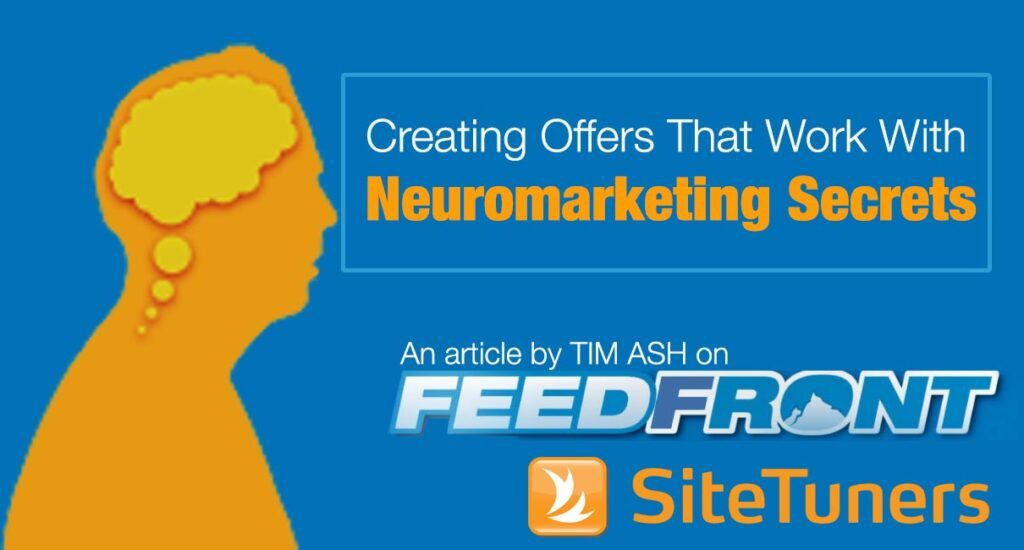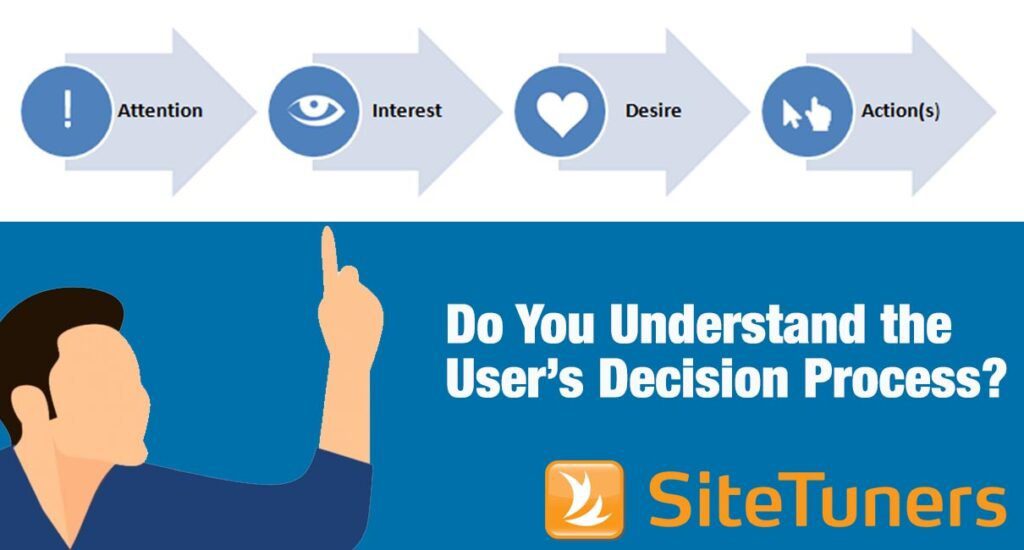Summary – Persuasion is art, skill, and strategy all rolled into one that can get you miles ahead of your competitors once you master it. But a lot of marketers don’t know how to properly implement the elements of persuasion into their website. Their efforts often backfire, turning potential visitors off rather than converting them. In this article, you’ll learn how to effectively use persuasion techniques to build trust and guide online visitors towards taking action.
Are persuasion techniques still effective?
As digital marketers, we’re accurately aware of the need for an engaging, persuasive website for our online visitors. But when it comes to persuasion, a little knowledge can be dangerous. We’ve seen this in the underhanded and reckless use of persuasion tactics on a lot of websites.
Persuasion practices in digital marketing need to evolve as consumers grow more sophisticated.
What Exactly is Persuasion in Marketing?
First things first: Persuasion is different from manipulation. While both may have a similar goal, manipulation has insidious connotations. Manipulative marketing is commonly associated with dishonest and unethical practices that companies do for their sole benefit and to the detriment of their customers. For instance, there are businesses that exploit scarcity marketing (eg. by faking scarcity) to trick people into buying their products. In a nutshell, what differentiates persuasion from manipulation is the clear intent to mislead or deceive.
Persuasion, on the other hand, is about helping your potential customers move forward with their purchase journey by providing value. To persuade someone to do something, you have to be able to motivate them to move from stasis or a state of inaction and indecision.
But this is not always simple. Persuasion is a technique, a skill, a strategy, and art all rolled into one. It requires understanding your target audience’s psychology and the motivations behind their behavior and decisions. You have to learn how your buyer thinks so you can use persuasion techniques the right way.
When presented with information about a product or service, there are two ways that people usually go about the decision-making process:
- The buyer analyzes all information, thinks about it thoroughly, then decides to act on it.
- The buyer decides on impulse without too much thought and accepts whatever is presented to them at face value.
Whichever of these paths they choose, their decisions ultimately hinge on several factors: their emotional state, the urgency of their need, their perception or level of exposure to the brand or products.
Using the elements of persuasion in marketing, marketers can reduce the cognitive load of the purchase decision. Once you learn to properly guide and motivate your potential buyers towards their desired action, you’re on your way to winning more conversions.
So, how do you persuade your customers the right way?
The Subtle Art of Persuasion
One thing that you have to remember about persuasion is this: people like having a sense of agency over their decisions.
No one likes feeling that they’ve somehow been pressured into doing something, like buying. Even as a marketer, you probably hate the hard sell as much as the next consumer.
That’s why persuasion techniques are intentionally subtle. People should want to buy your product or service without them feeling like they’re being sold to. This way, they would feel good about their purchase decision.
To successfully use the elements of persuasion in your marketing, you should keep these in mind:
- Subtlety – Don’t hound people with over-the-top persuasion tactics. The last thing you’d want to be is like a salesperson following a customer around a store trying to sell them an item. You’ll be sure they’d also walk out of your website as soon as they can.
- Clarity – What exactly do you want to persuade a visitor to do? Identify your need and focus on that. Make sure your visitor understands your intent and leaves no room for doubt.
- Respect – Some persuasion tactics can be perceived as underhanded and intrusive. Make sure not to overstep your visitors’ personal boundaries in your zeal to persuade. Let them feel in control by giving them enough space to make a decision.
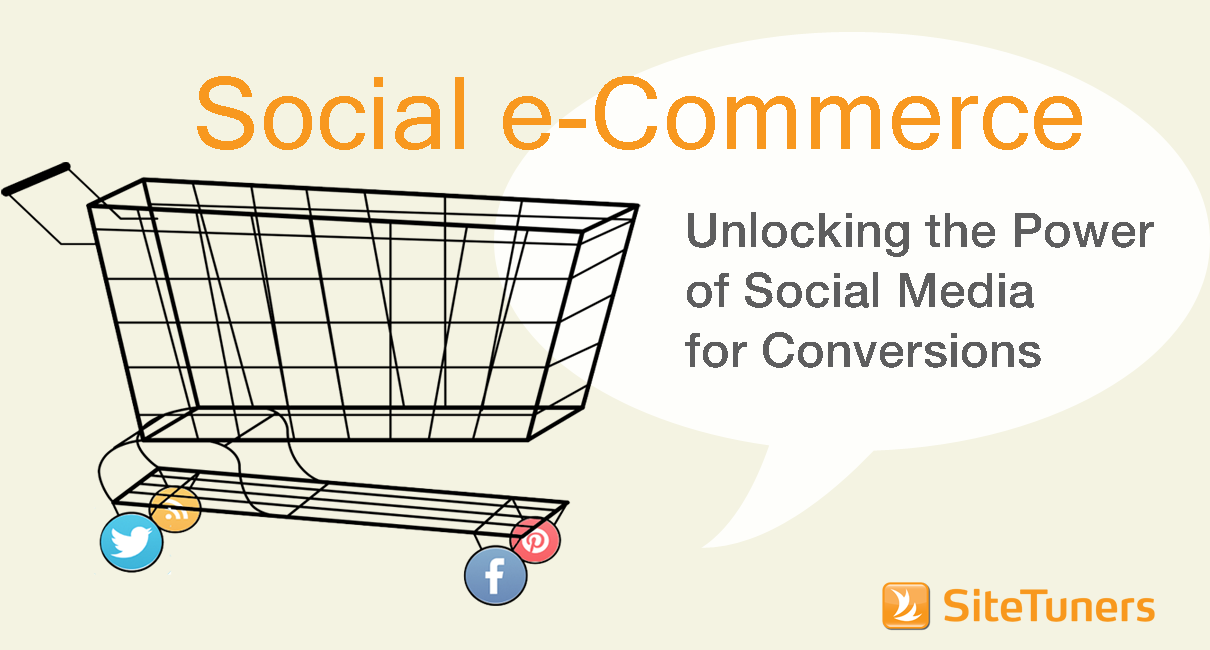
Learn ways you can leverage the social proof principle to increase your e-commerce conversions
Where Marketers Get Persuasion Techniques Wrong
Most marketers understand the importance that persuasion plays in conversion. However, a lot of them also get it wrong by immediately trying to persuade visitors as soon as they land on the website. This leads to prematurely using and overdoing persuasion techniques that ultimately lead to high bounce rates and abandoned carts.
Examples of Mistakes to Avoid
- Insanely Insistent CTAs
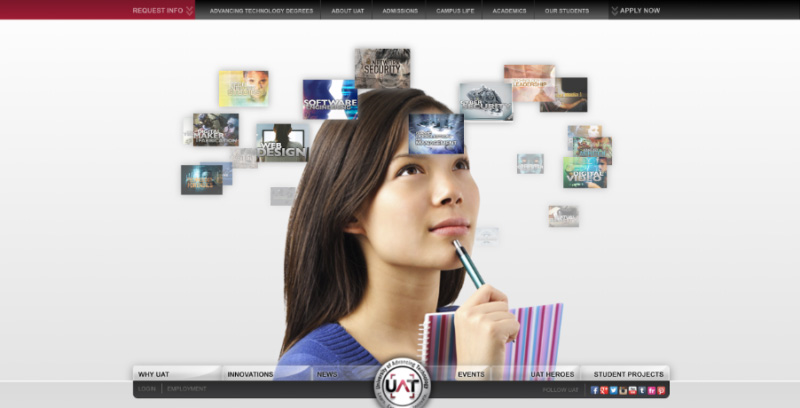
Trying to grab users’ attention with overwhelming CTAs that keep flashing without warning is counterproductive. Pop-up windows that appear too soon to help are also not advisable. The last thing you want is to interrupt your visitors while they’re doing something on your landing pages.
- Using baseless adjectives
Avoid using empty and unnecessary adjectives, such as world-class, best in the industry, amazing benefits, etc. to describe your products or services. If you really want your excellence to stand out, then let your customers do it for you with reviews or testimonials.
- Time-consuming texts and cues
People don’t read on the web. It’s best to stay away from long texts that don’t provide much value to the visitors. Only point them towards products that they’re interested in.
Identifying the Correct Elements of Persuasion Needed
To get persuasion right, you have to know which elements to use so you can nudge online visitors to their desired action.
Visitors need varying levels of persuasion to be spurred to action. Here, BJ Fogg’s behavioral model can be a useful framework for utilizing the right persuasion techniques and applying it in just the right amounts. According to the model, a behavior will only occur if three elements are present at the same time: Motivation, Ability, and a Prompt.
Persuasion takes care of increasing your online visitors’ motivation levels. However, you also have to ensure that you’re making it easy for people to act and that there is a clear prompt for that action.
Once you’ve taken care of the ability and prompt, you can focus on meeting the required persuasion for different visitor types. Here’s a cheat sheet to help you with it:
- Hot Leads + Enough Motivation = Minimal Persuasion
These types of visitors just need the right amount of reassurance to fully trust your business. Hot leads may be return visitors who have signified a strong interest in your products or services. But they could also be first-time visitors coming from strong referrals. This makes it highly likely that they will easily convert with minimal persuasion from you as long as the process is smooth and painless. Still, it wouldn’t hurt to give them a reason to stick to your brand even if a more worthwhile alternative comes along their way.
- Cold Leads Might Never Convert
Cold leads are people who have never heard of you or who don’t see an urgent need for your products or services at the moment. This makes them the most challenging group to convert – and there’s a great possibility that they may never do so – but it doesn’t mean you should ignore them. The key here is to use persuasion techniques according to their readiness to buy. For instance, you can build trust first by providing them with social proof. It may take a long time before they feel they know you enough to want to do business with you.
- The Most Opportunity for Persuasion are Warm Leads
This is the largest pool of leads your business has and the group you should focus your efforts on. While warm leads don’t have a very strong motivation to convert yet, they are highly interested and willing to explore your business more. This gives you ample opportunity to use persuasion techniques to convince them of the benefits of your products or services.
Execute Discount Pricing Strategies Right
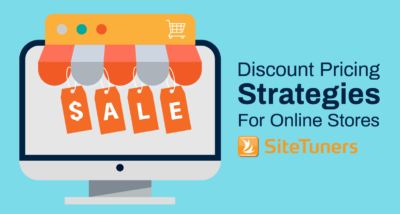
The Principles of Persuasion
What makes persuasion elements so powerful is that it allows marketers to tap both the rational and irrational aspects of the decision-making process.
Although people like to believe the opposite, most decisions are not driven by rational considerations. In reality, we decide mostly based on emotional and instinctive factors, and the cognitive shortcuts that help automate decision-making processes.
Persuasion principles are based on human motivations and the brain shortcuts that influence how people think, decide, and behave.
1. The Principle of Reciprocity
Our human behavior, explained by Cialdini’s Six Principles of Influence, is grounded on the tendency to reciprocate goodwill. If you give something to a person, they feel the need to give something in return. When you use this principle in marketing by giving something for free, consumers are compelled to do something for you as well, which makes it easier for you to convert them.
How To Use It:
- Give Free, Useful Content – You can provide a free webinar, video tutorial, or product sample to boost your connection with a visitor.
- Share Your Time – The best thing you can give people is your time. If it’s relevant to your business, it’s ideal to give free consultations or tutorials online.
- Give Personalized Thanks – Return customers are earned through genuine, heartfelt appreciation. For instance, a discount coupon with a personalized message will surely make them feel welcomed.
2. The Frequency of Illusion Principle
How often do you think about something and then you start to see it everywhere around you? Thinking of getting married? Suddenly everyone appears to be doing the same! Expecting a baby? Babies and toddlers are everywhere! Magical, isn’t it? No, it’s simple psychology.
The sudden increased frequency of seeing something is an illusion sparked by an awareness of something new. People devote selective attention towards a new object or idea they’re interested in, creating the impression that it’s suddenly everywhere.
In marketing, you can send targeted information to create interest among your online visitors. Doing this involves tracking online behavior and purchases and sending information related to their interests.
For instance, you can send an email about a newly launched product. Then as they browse online, they can see the same product being advertised. By the time they see a positive review about it on a Facebook page, the visitor is already convinced about your product’s merits and can’t wait to visit your website to buy it.
3. The Anchoring Principle
People love to compare against a standard. Even though they may not desire to drive the best car in the world, they will usually compare who among their friends, relatives, or co-workers has a better car than them.
This is similar to the anchoring bias: the tendency to compare all other things to the first thing we see. Imagine, for instance, going to a website to buy linens and the first item is priced at $800. Your brain anchors to that price point so when you see other items selling for $500, they don’t seem as expensive as the first one. This perception now influences your buying decision.
Similarly, someone who’s reluctant to buy something for $100 will jump at the opportunity once they believe that the original price is actually $180. Anchoring is very effective at persuading customers to buy something they would otherwise find overpriced.
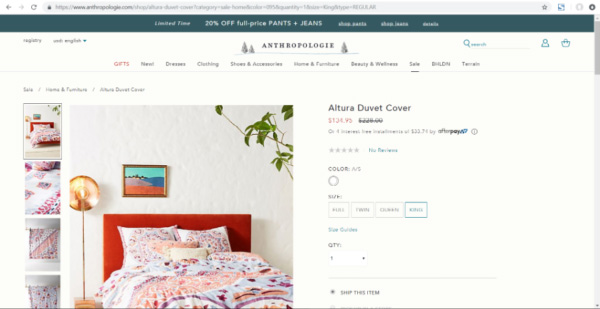
4. The Principle of Social Proof
Nothing stirs the will to act in people like the knowledge others are acting, too! It might seem a little harsh, but the world is full of sheep with the herd mindset. In marketing, when people are provided with proof that many other people are also subscribing, registering, buying, enrolling, etc., it stimulates the need in them to do the same.
Examples of Social Proof
- Power of Numbers – On Youtube, the number of subscribers is displayed to give proof and cue new consumers to jump on the bandwagon. For most websites, marketers also highlight the number of people who have bought a product or used a service from their website.
- Proof of In-Demand – Proof of in-demand uses social proof to convince potential buyers that they need the product. In the example below, you’ll see how Hotels.com uses proof of in-demand by showing a pop-up that states the number of reservations in the past 24 hours. When the visitor has a slight hesitation and needs a little push to convert, these types of pop-ups provide immediate social proof that others are also interested in booking the same item or service.
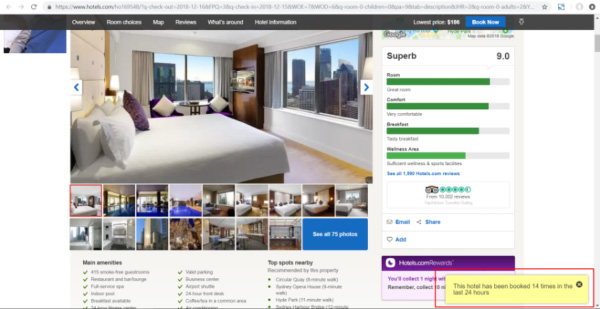
- Social Media Shares – When users see that many people have shared your content on social media, it’s an instant boost to your brand image and they’re encouraged to share as well. If you have a low number of shares, avoid a negative social image by waiting for it to reach a respectable number before broadcasting it on your website.
5. The Principle of Benefits
“What’s in it for me?”
People are driven by self-interest. If you want visitors to convert, you should be able to prove to them that buying something is advantageous for them. Help them find the motivation to act on it.
Examples:
- Discounts – Highlight how much they will save when they buy your product. Amazon even shows the percentage of discounts. Here’s a good example from Expedia:
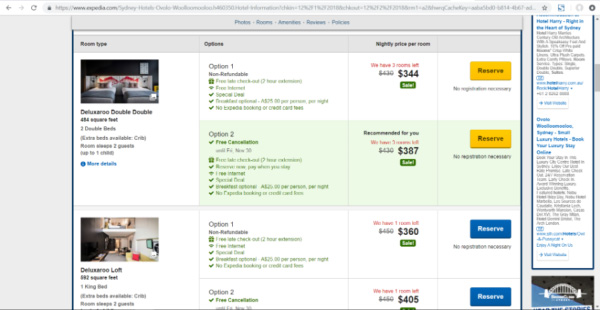
- Reviews and Ratings – Show them verified reviews and ratings to amplify your website’s credibility in satisfying customers. This way, the benefits of the products will be reinforced well to your visitors. Reviews and ratings actually let you do two kinds of persuasion techniques – social proof and benefits. Allow visitors to filter the reviews from newest to oldest as well if possible so they get an idea about what recent buyers think of the product.
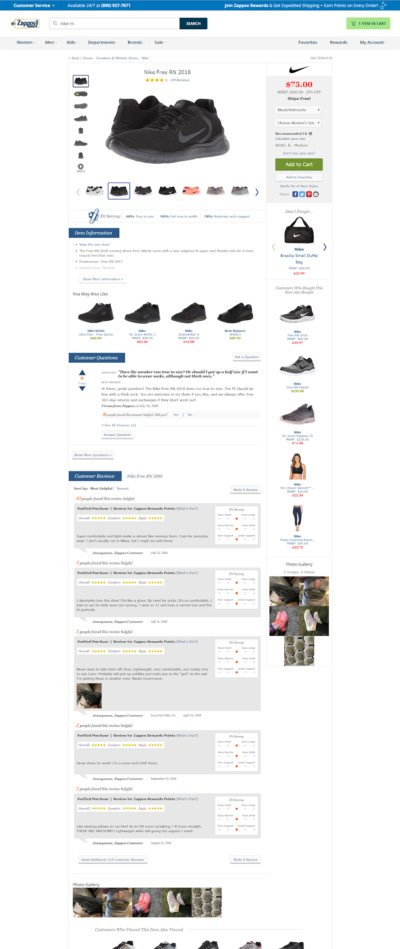
- Show Comparisons – It’s given that your visitors will compare your brand to a lot of websites so they know they’re only getting the best. Make them hit the Buy button quicker by easily showing them comparisons right on your website. Do this by using data from a reliable, well-known comparison website to highlight your top benefits.
6. The Principle of Authority
People are more likely to believe in your brand when it is being endorsed by someone well-known or an expert in your industry. Potential customers trust experts who can demonstrate their authority in an area.
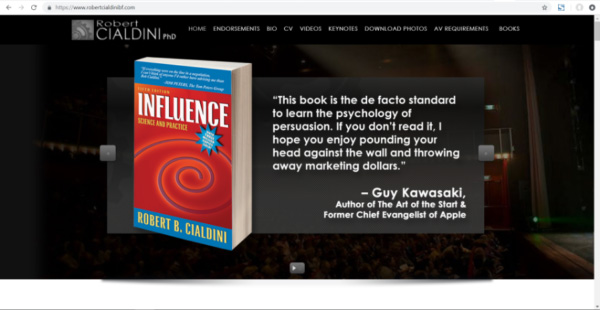
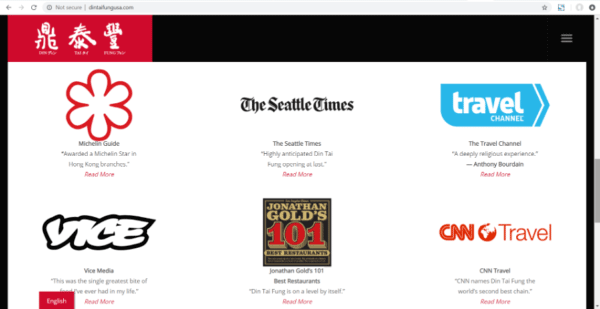
Whenever possible, it’s also ideal to display proof of your expertise through trust symbols, such as FAQs, and informative blogs.
7. The Principle of Scarcity
Notice how children are naturally attracted to cookies sitting in the kitchen? But the moment they realize there are a few pieces left, the appeal to have them increases significantly. The fear of scarcity is ingrained in human psychology. That’s why people rush to stock up when they sense that something is in short supply.
Scarcity is one of the best persuasion techniques to use on your website if you want your visitors to feel a sense of urgency. People are more likely to act quickly and push through with the conversion if they fear that the product will be gone soon. Kahneman’s Loss Aversion Theory backs this up by stating that the fear of losing something drives people to act more than the hope of gaining something.
Examples of using the principle of scarcity to encourage people to act are:
Short Validity – An offer the user believes is valid only for a short time or a fast-selling product works better in capturing their interest to buy the product.
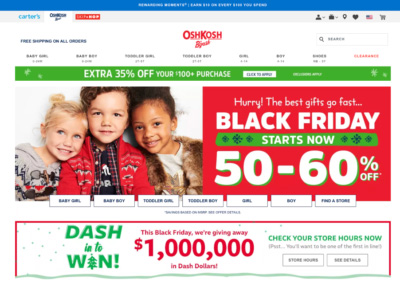
Shortage – A perceived scarcity of a certain product, leading the customer to believe they need to stock up.
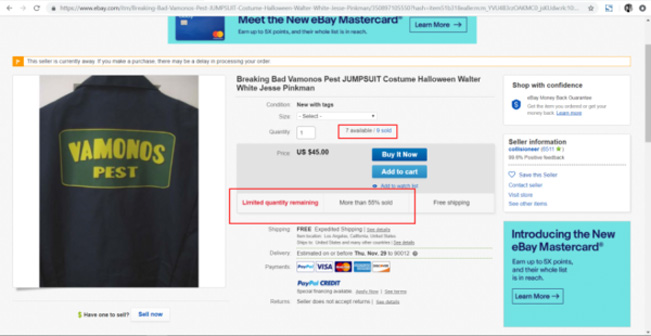
A live counter of the products left in the product description also works effectively for persuasion.
Reward for a Limited Time – Whether it’s an introductory offer valid for first-time users only or a promised gift when you purchase right away, rewards with limited availability greatly help to encourage a positive buying decision.
8. The Principle of Exclusivity
When people feel something is exclusive to them, or to a group or community they belong to, it creates a perception of privilege for them. This is the reason why many people spend thousands of dollars on elite club memberships.
The key to using the principle of exclusivity is limiting the ability or availability to a select few. For instance, some stores have rewards programs with member-only discounts or even exclusive items. High-end brands also significantly reduce the number of stocks and availability of their items to create and reinforce the sense of exclusivity that’s attached to their products.

9. The Principle of Impulse
Impulsiveness is an innate human behavior. Our impulses are hard to resist because of our emotional and instinctive nature. We buy things while driven by our emotions and then rationalize the purchase later.
For this principle to work with marketing, you just need a stimulus to trigger it. People are known to buy items impulsively when they’re led in the right direction so once you find the right triggers, your conversion is in the bag!
Examples:
- Special Sales – Holiday season sales that feature unbelievable discounts catch amazing crowds.
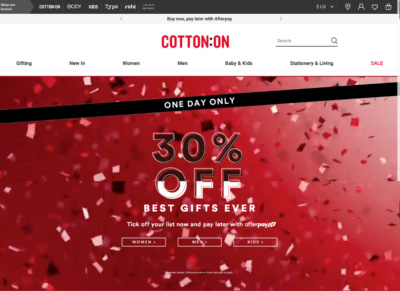
- One-Time Discount – Go for an ad that promotes products that are discounted for the first time or last time ever. Clearance sales are also irresistible for consumers.
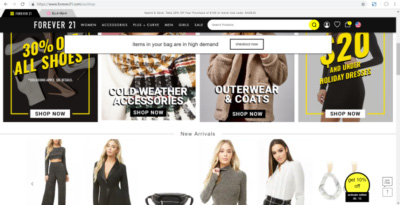
10. The Principle of Likability
People are wired to be drawn to things that they like or are pleased with. So if they’re on your website and they really like what they see, the situation becomes more conducive for persuasion.
The key is to subtly suggest a conversion action that they’re most likely to act on.
Now how do you make your website likable? There are several ways:
- Be Informal and Helpful – Try to be as relatable and human as possible so your visitors can connect with your brand.
- Use Appropriate Images – Use pictures that your target audience can identify with.
- Choose the Right Aesthetics – Your website’s overall look significantly matters in persuasion. It should always be appealing to the audience you’re targeting.
Persuade and Convert
Persuasion is an art and strategy that’s highly effective for converting potential customers and essential for marketing. By integrating persuasion techniques into the different parts of your website, you can influence online visitors’ perception of your trustworthiness, likability, and credibility. You can create an online experience that makes it effortless for your potential customers to take the desired conversion action.
As a digital marketer, you need to keep exploring opportunities to persuade your audience: from the little details like trust symbols to helpful and authoritative content. Be in-tune with their interests so you can proactively meet their needs. When done right, the elements of persuasion can help you win eager, loyal customers who will choose to buy from you every single time.
